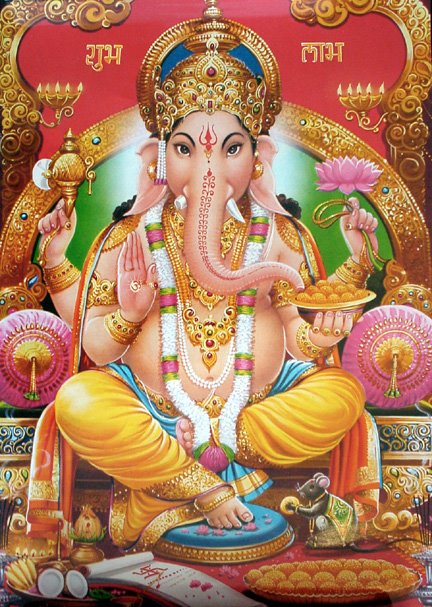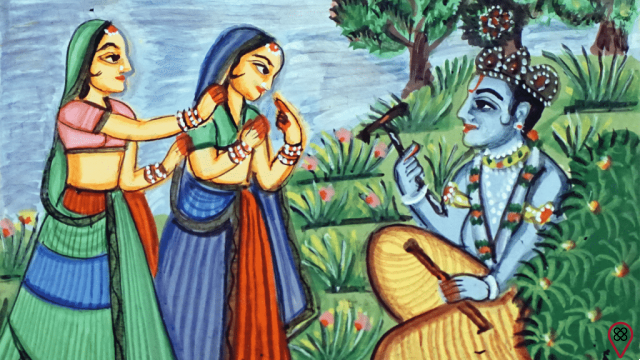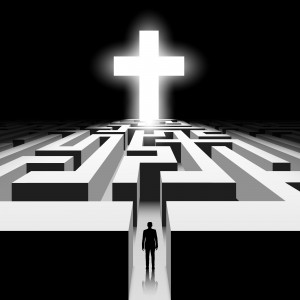
One of the most important gods of Hinduism, a religious philosophy that originated in the Indian subcontinent, Ganesha is also known as Vighneshvara, which means “destroyer of obstacles or difficulties” in the Hindu language.
Ganesha symbolizes the universe and is known as the god of wisdom and fortune. He is possessed of a logical conscience and also represents the full balance between generosity and strength.
Your image is quite characteristic and you've certainly come across it on the internet, in books or even on t-shirt prints. The deity is depicted with a human torso, an elephant's head, four arms and a huge belly. Generally, Ganesha is represented seated and in the company of a mouse.
But how to interpret this figure so known around the world? And what are the lessons we can learn from Ganesha?
The origin
According to Hindu mythology, Ganesha is the son of Shiva and Parvati. Shiva is the god of destruction, while Parvati, the goddess of love, is considered the Supreme Mother. One of the stories that narrates the origin of Ganesha tells that, as a boy, Ganesha was beheaded by his own father.
That was because Parvati had been cursed so she couldn't have children. However, she felt quite lonely when Shiva was away for long periods of time, so she created Ganesha from slivers of her own skin. One day, she asked her son to watch the house so that no one came in while she was in the bath.
It was then that Shiva appeared and the boy, following his mother's orders, did not let the supreme god pass. Not knowing that this was his son, Shiva cut off Ganesha's head. As soon as Parvati appeared and saw the scene, she became desperate and threatened to destroy the universe.
To redeem himself, Shiva ordered the head of the first creature to be placed on the boy, which, in this case, was an elephant, a sacred animal in Hindu culture. And so Ganesha reemerged as a half-man, half-elephant god.
Understanding Ganesha Symbology
Ganesha is almost always represented in a similar way, whether in the form of a statue, sculpture, or painting. There are many details that make up his figure, and each one of them is full of very important meanings for Hindu culture. Check out each of these symbols:
head and ears
Its elephant head and ears are big for a particular reason. The head symbolizes intelligence, wisdom and understanding. The huge ears remind us that we need to listen to people more, and once we are able to listen and really assimilate the teachings, we will be on the right track to achieve our goals. The head and ears also translate the first two steps towards self-realization for devotees of Hinduism, Sravanam and Mananam, which, respectively, mean listening to and reflecting on the teachings. There is even a detail on Ganesha's forehead: the mark of a trident, which represents Shiva.
Trumpet
The curved trunk of the deity symbolizes the “viveka”, which is the ability to discern between that which is eternal and that which is infinite. Furthermore, while the trunk has the strength to knock down a tree, it is sensitive enough to bring water to the elephant's mouth. Through this symbology, Ganesha teaches us to have a certain acumen to deal with opposites in our life, and they are in constant coexistence, like pain and joy or health and illness.
Presas
If we look closely, we can see that Ganesha's fangs are broken. In this way, they represent the sacrifices we make throughout life. Each prey also has a small quirk. While the left fang symbolizes human emotions, the right fang corresponds to wisdom. These two faces of an individual's personality need to be in constant balance within each of us, as well as the duality existing throughout the universe, such as cold and heat, night and day, good and evil.
Belly
His big belly represents something very deep. It shows his ability to swallow and digest all of life's obstacles, in addition to all the teachings he has already assimilated. Ganesha shows us that we need to go through all the experiences reserved for us during life, whether good or bad, after all, what we get out of these experiences is what really matters. We must always face every moment as learning and, thus, overcome all challenges.
Braços
Ganesha has four arms, each representing a different aptitude of the subtle body (or energy body). They would be: the mind (manas), the intellect (budhi), the ego (ahamkarar) and the conscience (chitta).
Hands
Like the arms, Ganesha has four hands, each of which carries some object with a specific meaning.
upper right hand
In this hand, Ganesha holds an axe, a tool he uses to shoo away obstacles. As he is the god of wisdom, Ganesha also uses the ax to destroy ignorance, which causes so much evil on Earth.
upper left hand
In his upper left hand, we can see the lotus flower, which represents the greatest goal of human achievement, self-knowledge and the encounter with his "inner self". In this same hand, he also holds a rope, symbol of strength and representing attachments and earthly desires that must be abolished.
lower right hand
This is the hand directed towards the devotee. Positioned in abhaya mudra, a welcoming gesture in Hindu philosophy, the hand facing the person who sees it symbolizes blessings and protection. It is also a way to emanate energy and welcome those who are in search of spirituality.
lower left hand
Finally, the lower left hand displays a plate of modaka, a typical Indian sweet made with milk and roasted rice. No wonder it is also Ganesha's favorite treat. This dish symbolizes the peace, satisfaction and fulfillment that knowledge can bring to people.
The mouse
There are several versions that would explain why Ganesha is always accompanied by a mouse. One of them says that the mouse would be the ego and that, before controlling our ego, we must be aware of it. The ego would be, mainly, our desires and our pride. Another interpretation understands the mouse as the vehicle of Ganesha and sees the god as knowledge and the mouse as the mind. When Ganesha appears mounted on the mouse, this is the representation that consciousness is something much greater and that it has the power to control the mind.
What do we learn from this deity?
In Hinduism, deities are recognized from three points of view: material, psychic and spiritual. Therefore, the divine forces that are present in this religion cover all spheres of life. Ganesha, like the other deities, invites us to look within, to seek self-knowledge and to reflect on the world we live in. Our mind, like everything else in nature, can be quite unstable. Ganesha is the wisdom that commands nature and it is he who guides and protects all beings.
- Discover the main Indian gods and their meanings
- Discover Ganesha, the Hindu God of Obstacle Destroyer!
- Learn the prosperity mantra, used to invoke Ganesha
An interesting fact about the elephant is that this animal, because of its size, takes the lead and opens the way for other animals in forests where the forest is closed. This trait perfectly translates the god of obstacles. Ganesha is worshiped by his devotees mainly at the beginning of some new journey.
When someone is going to start a new phase in their life, be it personal or professional, it is essential to make a ritual with offerings to Ganesha, in order to attract prosperity, success and happiness in the future project.

























